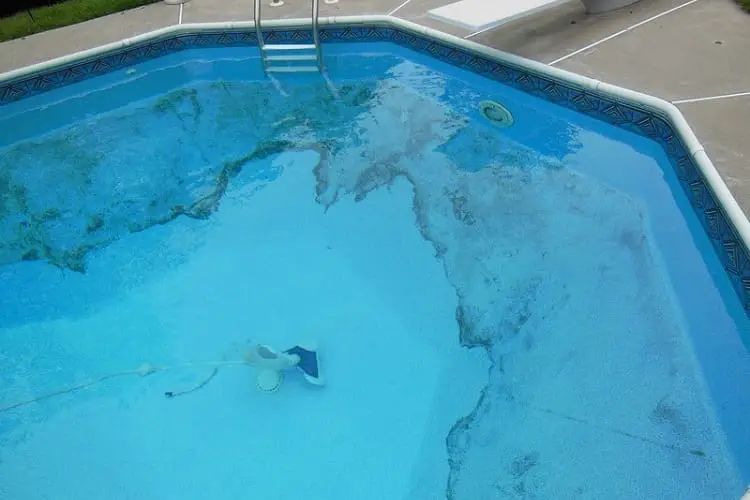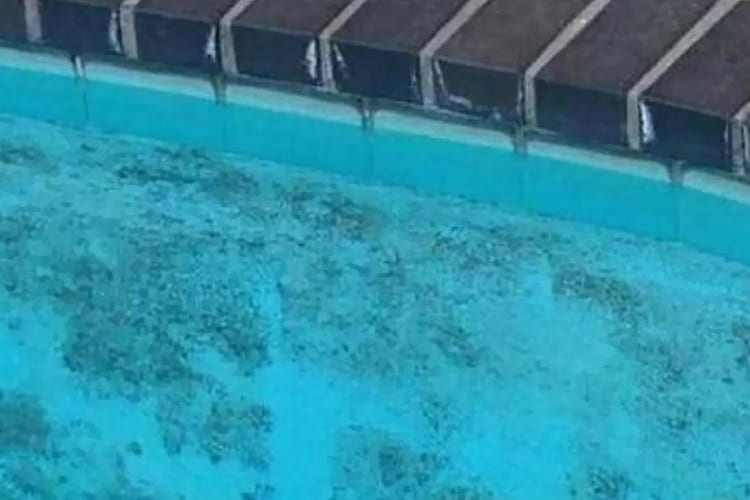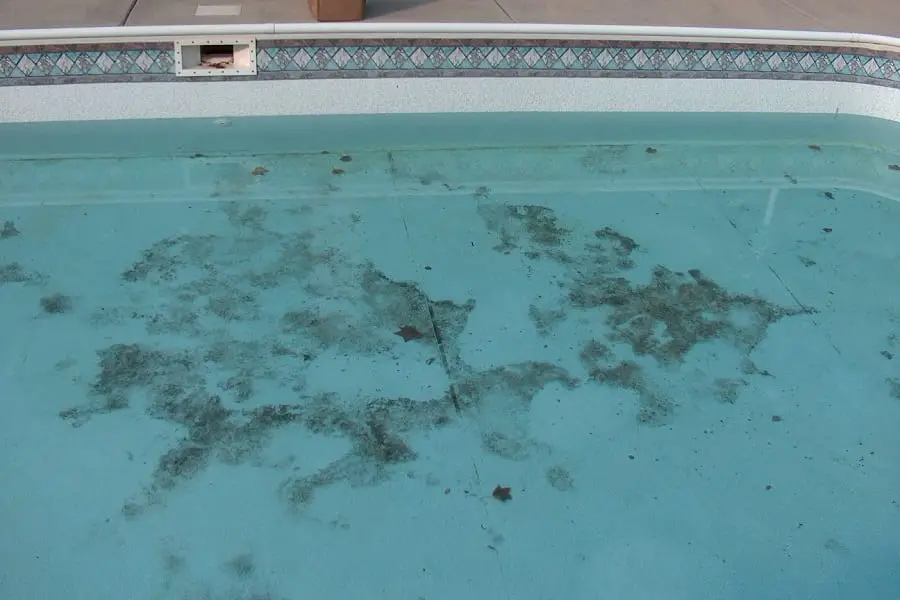If you have had a swimming pool in your house while growing up, you might remember your parents insisting that you rinse yourself and your bathing suit after stepping out of the pool.
Though it might seem like an annoying inconvenience, a few minutes of your time and effort in post-swim rinsing can save you a whole lot of trouble later on.
Swimming pool maintenance isn’t effortless. There is no dearth of issues that arise out of a swimming pool that is not regularly and properly maintained. A few preventative measures thus can be the difference between a well-kept pool and a poorly kept one.
One of the most common and the most dreadful problems that can arise in any pool is the appearance of black algae in the pool.
Many pool owners have faced the issue at some point or the other, and they all agree that black algae are a real pain to deal with. If you have spotted small black spots on the surface of your pool, you might be in for a shocker.
To be able to treat it properly, you have to first understand black algae. Here is some information that might come in handy.
Contents
What is Black Algae and What Causes It?

Black algae is a type of algae that gets its name from the color that it exhibits on the surface of the water.
Other types of algae include red algae, green algae, and others. Black algae is slightly more stubborn than the other types and is harder to kill and remove vis-à-vis its more colorful counterparts.
As with other algae, black algae loves dirty water.
They thrive in such waters, multiplying, and growing quickly. It is a common occurrence in pools, which are not regularly cleaned, whose filters have broken down, and there is no proper water circulation, especially in warm waters, which get plenty of sunlight.
Once the black algae has established itself in a pool, it can take hours of manual labor to take it out.
But how does it get there in the pool in the first place?
Well, rarely the black algae is carried into your pool through airborne means, but mostly it is simply as a result of someone carrying the algae into the pool through their contaminated body or bathing suit. You see, black algae is present in many natural bodies of water.
When someone goes swimming in a lake or a river, and then enters a swimming pool, without rinsing off first, they carry the black algae from the natural water bodies to the pool.
Is Black Algae Harmful?
Though it can be disgusting to look at and a hindrance to swimmers, it is not essentially dangerous to humans.
You can indeed swim in a pool with black algae without it having any adverse effects on your body or health. Black algae is a big nuisance, no doubt, but it is not harmful.
That said, it is not recommended that you dive into a pool full of black algae, as it can harbor some harmful organisms such as E.coli, which can make you quite ill.
Does chlorine shock kill black algae?
Unfortunately, though, black algae is a rather stubborn pest to get rid of. While other algae can mostly be treated by a chlorine shock to the pool, black algae develops a protective layer that makes it largely immune to chlorine shocks.
To kill black algae entirely, you must first remove this coating off it, so the chlorine shock can do its job.
Chlorine shock is part of the remedy that you give to a swimming pool, but a chlorine shock alone will not do much against the resistant coating that protects the black algae. For the chlorine shock to work, you must first scrub off the top coating.
How to treat black algae in a pool?
If the black spots have already started appearing in your pool, the algae has made a home for itself already.
Treat it as quickly as possible, or else it will double in no time. Here is a step by step guide ton how to treat algae in a pool.
Sanitize all Pool Related Items
Anything that goes into the pool, including all your pool toys, accessories, and stuff, must be thoroughly cleaned as they can have traces of the black algae too.
If you take the same dirty products back into the clean pool, the algae can enter your pool again, and the rest is history.
Backwash the filter
Clean the filter. If it is removable, take it out and rinse it, otherwise backwash it.
You’re going to have to run the filter as part of your treatment, so make sure your filter is thoroughly clean.
Scrub the algae
Take a wire-bristled algae brush and start scrubbing. This is the part that takes the most hard work. Wherever you see black spots, go at them with the brush, scrubbing them hard.
Remember, you’re not trying to remove the algae with the brush, but only take off the topcoat that prevents chemicals and algaecide from getting to it. Scrub all the spots you see on the pool floor, walls, and crevices.
Rub it with a Chlorine tab
Once you are done scrubbing the pool with a brush, don on some gloves and rub some chlorine tabs onto the algae spots.
Now that the top, a protective layer is removed, the chlorine can directly impact the algae.
Add an Algaecide
Purchase a good quality algaecide in a generous quantity and mix it with the recommended amount of water for the capacity of your pool.
Follow the instructions on the packet about the mixing quantities and then pour the mixture down the sides of the pool. Make sure that the algaecide touches and covers all algae spots sufficiently well.
Tripe Shock the Pool
Use thrice the amount of recommended sodium dichlor pool shock that you generally use to shock your pool.
The algae is exposed without its top coating, and now the chlorine shock will hit it as it should. Shocking once will not do the trick; shock the pool thrice to make sure that all algae is removed.
Scrub again daily
Frankly, even this won’t make the algae leave immediately.
You might still see some of the black algae spots for a couple of days. You must make sure to keep rubbing the spots daily with a brush till you can see them.
Keep the Water Moving
Run the filter either immediately or after a few hours of shocking the pool. You must ensure that the water is moving. Leave the filter running for 24-48 hours, so the water and the chemicals can reach every part of the pool.
A word of warning: give your pool some time before diving in again. You must never enter a pool that is being or has recently been treated as there might be a lot of residual algaecide and chlorine in there.
Make sure to wash the pool completely and thoroughly before stepping inside again.
How to Prevent Black Algae?

You don’t want all that hard work in cleaning the pool to go to waste, do you?
Well, it’s easier to adopt a few healthy pool etiquette than going through a thorough cleanup every few months. The easiest way to prevent black algae from sprouting up again is to make sure that you always rinse off firsts before stepping into your swimming pool.
If you don’t have a small shower installed outdoors, you could build one on the side of your pool so you, or anyone else, do not forget.
You must also make it a habit to clean the pool every few months, and make sure the filter and motors are running and in top shape. Prevention is better than cure, right?
Black algae can be such a hassle, but it is treatable. So, don’t despair if you do see the notorious black algae dotting the lining of your pool.



